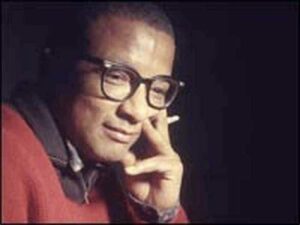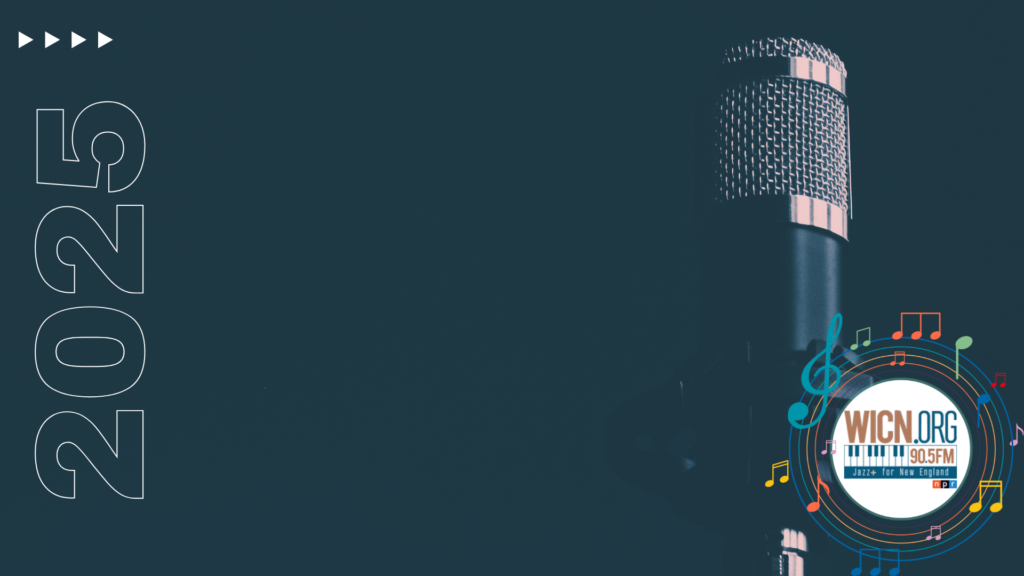WICN Artist of the Month, November 2024: Billy Strayhorn
Written by Doug Hall on November 1, 2024
By Doug Hall, WICN Contributing Writer
 In the history of jazz, there are relationships between two musicians as performers, composers, or arrangers, or all combined. Seminal examples include George and Ira Gershwin, Ella Fitzgerald and Louis Armstrong, Harold Land and Bobby Hutcherson, and Alice Coltrane and Pharoah Saunders. Yet, there is a distinct level of accomplishment and contribution to modern jazz orchestration, and the American songbook created by the working partnership of Duke Ellington and Billy Strayhorn. Strayhorn’s compositions, many previously credited to Ellington, are recognized as the highest standards in modern jazz arrangement, orchestration, and recordings. These songs include Take the ‘A’ Train, Lush Life, Chelsea Bridge, Day Dream, A Flower is a Lovesome Thing, and Something to Live For. Regarded by music scholars and jazz musicians alike as one of the greatest composers in the genre’s history, Billy Strayhorn has earned a groundswell of deserved re-evaluation and attention.
In the history of jazz, there are relationships between two musicians as performers, composers, or arrangers, or all combined. Seminal examples include George and Ira Gershwin, Ella Fitzgerald and Louis Armstrong, Harold Land and Bobby Hutcherson, and Alice Coltrane and Pharoah Saunders. Yet, there is a distinct level of accomplishment and contribution to modern jazz orchestration, and the American songbook created by the working partnership of Duke Ellington and Billy Strayhorn. Strayhorn’s compositions, many previously credited to Ellington, are recognized as the highest standards in modern jazz arrangement, orchestration, and recordings. These songs include Take the ‘A’ Train, Lush Life, Chelsea Bridge, Day Dream, A Flower is a Lovesome Thing, and Something to Live For. Regarded by music scholars and jazz musicians alike as one of the greatest composers in the genre’s history, Billy Strayhorn has earned a groundswell of deserved re-evaluation and attention.
As the silent partner for three decades (1939 – 1967), in collaboration and outright singular compositional contribution to the Ellington Orchestra, Billy Strayhorn would remain out of the public eye as a performer despite being an equal to Ellington on the music sheet. In 1965, two years before his untimely death, Strayhorn, giving his only live piano recital on record, told the audience a story about an unnamed accompanist who would call him at any time of the day or night, whenever this unnamed composer was stuck and couldn’t finish writing a song. A quote from Duke Ellington’s tribute, spoken at Strayhorn’s memorial service in 1967, sums up this relationship thusly: “Billy was seldom seen in public appearances, but always heard.”
A superbly gifted lyricist, arranger, and orchestrator, as well as a virtuoso pianist, Billy Strayhorn also helped shape the direction of modern jazz through the platform of Ellington’s impeccably talented jazz orchestra. Ellington ensured and maintained the highest standards of musicianship and managed through salary and reputation to have less turnover than competing big bands of his era. In no small way, Strayhorn was equally instrumental in the caliber of songwriting that allowed these hand-picked jazz musicians to become famous and celebrated, particularly as soloists.
Ahead of his time during the big band era, the next development in jazz would lead to bebop and modal changes. Strayhorn was heard by Dizzy Gillespie and Miles Davis – leaders in their respective genres. Gillespie was quoted as saying, “All those sevenths – man. I never heard anything like those things until him [Strayhorn]. I got ideas from hearing him that I knew I could use forever.” In addition to influencing the next generation of bandleaders, he was grounded by modern classical composers. As described by jazz bassist, bandleader, and Colburn Conservatory alumnus Martin Martinez in his series on Strayhorn, “He brought a complexity to melody, orchestration, harmony and compositional form – his influences are quite classical including Debussy, Ravel, and Stravinsky.”
Lush Life would forever be his most familiar personal song, composed when he was just sixteen years old. Its melancholy mood and reflective lyrics were performed by many jazz vocalists in his lifetime, including Ella Fitzgerald, who claimed it was her favorite song to sing. Frank Sinatra would further popularize Lush Life with his songwriter, Sammy Cahn.
Take the ‘A’ Train, Ellington’s signature composition, played hundreds of times by the Ellington Orchestra, was by written by Strayhorn as a tribute to Ellington. The familiar historical story and context was that Ellington penned the words Take the ‘A’ Train in 1939 when he hired Strayhorn and was giving him directions to his home in Harlem. Strayhorn’s original inspiration related to his love of arrangements by another big band leader, Fletcher Henderson. “One day, I was thinking about his style, the way he wrote for trumpets, trombones and saxophones, and I thought I would try something like that,” Strayhorn recalled.
As a musical footprint, Strayhorn is thought by jazz scholars to fit into what was referred to as the “Ellington Effect.” Yet, as explained again by Martin Martinez in his tribute series Ever Up and Onward: A Tribute to Billy Strayhorn, Strayhorn stood his ground with his compositional structure, notes and ideas, “I function independently, he is e (Ellington) and I am me. It works because he doesn’t tell me what to write or how to write. He just says, ‘write something;’ he knows it is going to be me.”
There was a clear symbiosis in the Ellington and Strayhorn relationship, so disagreement exists as to a fine line of separation from who contributed, and how much, to each arrangement. As a proverbial fly on the wall for rehearsals through friendships with both musicians, British jazz pianist, composer, producer, and journalist Leonard Feather spoke about this blurring of musical distinction, “the musical vibrations between Strayhorn and Ellington became so sympathetic that sometimes neither they themselves nor members of the band could recollect at what point the work of the other one had left off and the other had begun.”
From a performance standpoint, Strayhorn did evolve to become an encore pianist. Introduced on stage by Ellington at the end of the performance, Strayhorn would follow the band’s introduction of a familiar orchestral composition and take a seat at the piano in place of Duke Ellington. This oversized personality would then introduce his “silent” partner with affection and respect. Their special endearment for one another is evident in these existing live recordings on film, often with Ellington standing by Strayhorn and moving to the melody and beat.
As an openly gay man in a far less tolerant era than our current one, Strayhorn was directly marginalized in artistic credits, and more specifically by Ellington’s late-career publicist Joe Morgen. As covered in an in-depth JazzProfiles article, Morgen is exposed as antigay “and diligently kept Strayhorn’s name out of the press.” Morgen applied this same cruel exclusion for many studio projects, leaving Strayhorn entirely uncredited in the acknowledgments despite the wealth of contemporary research showing that he contributed up to two-thirds of the composition in many cases.
Along with the recognition deserved for his talents, Strayhorn’s legacy continues to grow. Any list of jazz-related Top 5 compositions of the 20th century will include Take the ‘A’ Train and often at least one or more of his songs as well. Fortunately, through several foundational organizations Strayhorn’s catalog is being updated with appropriate credit, reemphasized, and finding new audiences. The Billy Strayhorn Songs Incorp is a legacy foundation established by heirs and family members with the stated purpose to “register and reclaim Billy Strayhorn’s music.” Through the Billy Strayhorn Foundation, a group entitled Fan Base presents lectures, symposiums, and educational material to “keep his legacy alive and his credited accomplishments shared with a wider public.” He has posthumously been inducted into both the American Songbook Foundations’ Hall of Fame (2021) and inducted into the International Society of Jazz Arrangers and Composer’s Hall of Fame (2021).
Ellington’s statement about his three-decades-long compositional, arranging, and orchestral partner is summed up in this quote, “Strayhorn lives the life that I would love to live, you know. He is the purest artist.”

